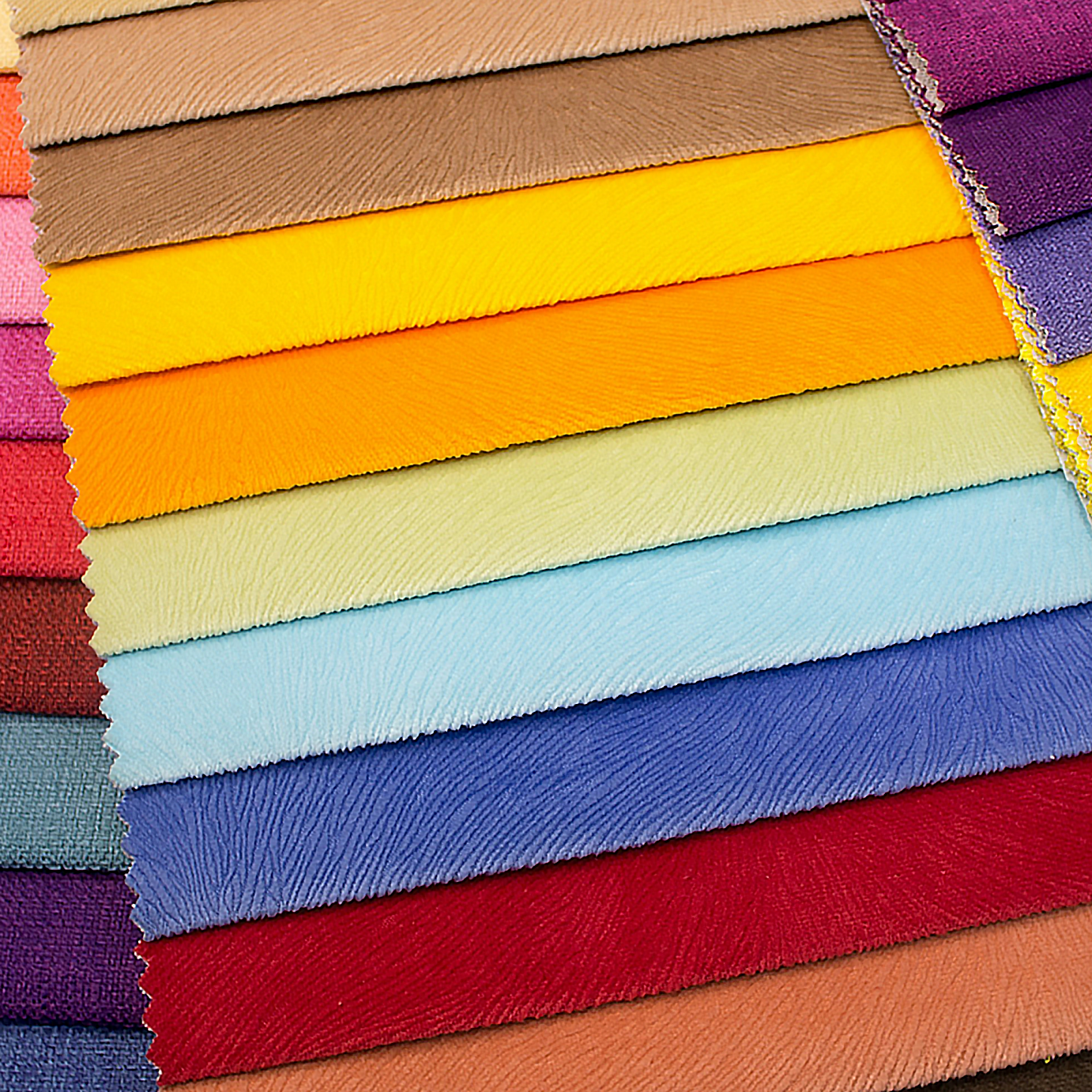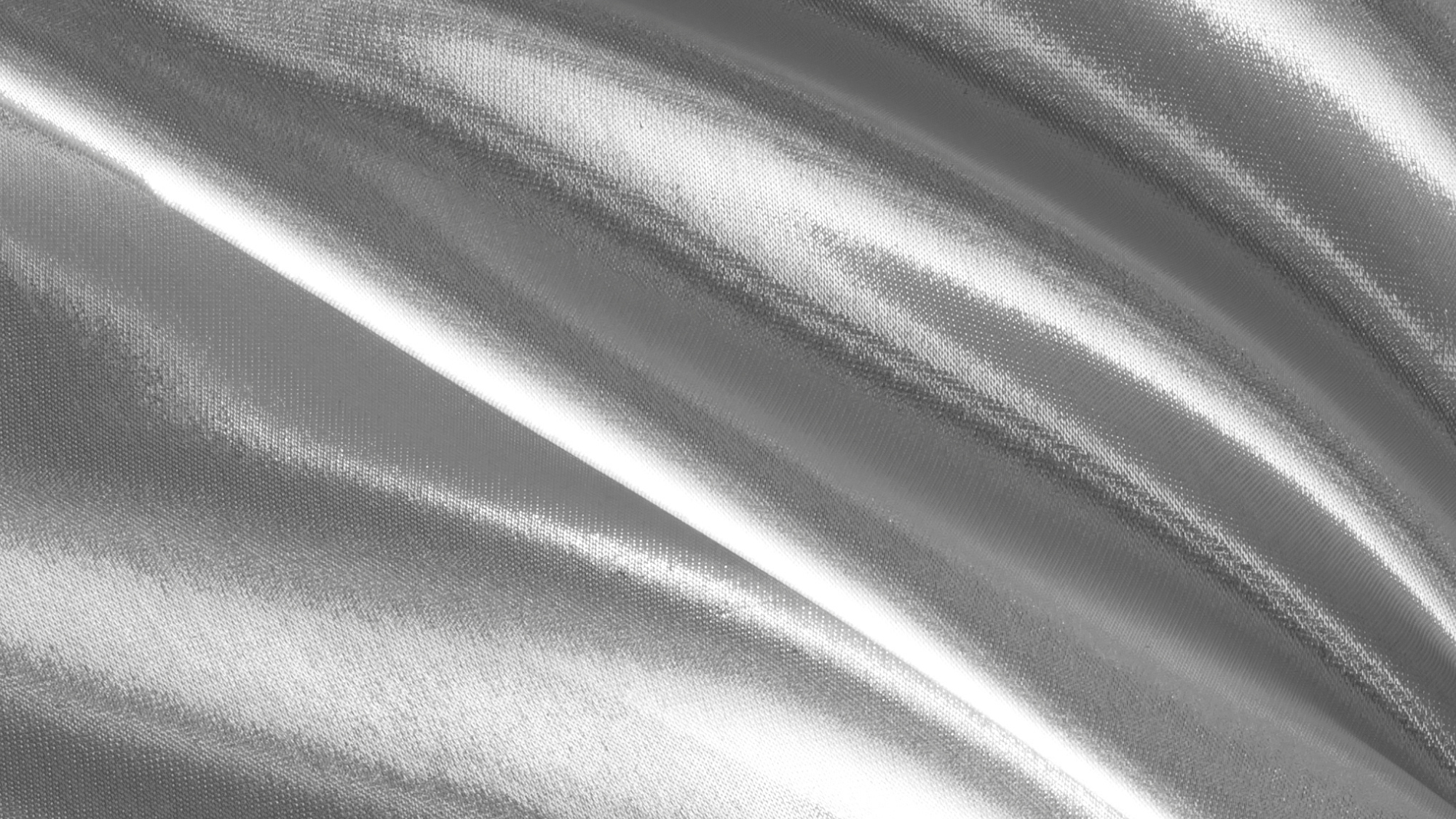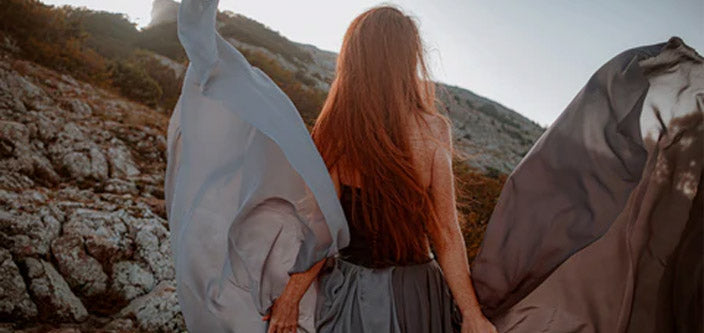
Slip dresses are a fashion staple due to their versatility and elevated comfort. They’re also a relatively simple project to DIY. In this blog post we’ll discuss which fabrics you should consider for your DIY slip dress, along with a few of our sewing tips.
What is a slip dress?
A slip dress is a type of dress that is characterized by its simple, elegant, and often minimalist design. It typically features thin shoulder straps, a straight or slightly A-line silhouette, and a loose, flowing fit that skims the body without being overly form-fitting. Slip dresses are often made from lightweight and silky fabrics that drape gracefully, creating a fluid and feminine look.
Originally inspired by the undergarment known as a "slip," which is worn underneath dresses to create a smooth silhouette and prevent clinging, slip dresses emerged as a fashion trend in the 1920s. They gained popularity during the 1990s, becoming a defining style of the decade's minimalist fashion.
Slip dresses can be versatile and styled in various ways to suit different occasions. They can be worn as a standalone dress for more casual settings or dressed up with accessories and outerwear for formal events. Slip dresses are often associated with a blend of sensuality and simplicity, and they have the ability to create a timeless and elegant look.
What are the best fabrics for slip dresses?
Slip dresses are lightweight, elegant garments that often require fabrics that drape well, provide comfort, and have a subtle sheen. Here are some of the best fabric options for slip dresses:
1. Silk. Silk is a classic choice for slip dresses due to its luxurious feel, smooth texture, and beautiful drape. It has a natural sheen that adds an elegant touch to the dress. However, silk can be delicate and may require special care. Luckily there are synthetic options like satin that make affordable, easy substitutes.
2. Satin. Satin is another popular choice for slip dresses. It has a glossy surface that lends a sophisticated look. Satin is available in various types, such as silk satin, which offers a more expensive feel, or synthetic satin, which can be more budget-friendly.
3. Crepe de Chine. This lightweight and slightly textured fabric is a type of silk with a subtle crinkled appearance. It drapes well and offers a refined look, making it a good option for slip dresses.
4. Charmeuse. Charmeuse is a lightweight, smooth fabric with a glossy finish on one side and a matte finish on the other. It's often made from silk or synthetic fibers and is known for its beautiful drape and elegant appearance.
5. Rayon. Rayon is a versatile fabric that can mimic the feel of silk or cotton. It offers good drape and is available in various textures, including satin-like finishes.
6. Jersey. If you're looking for a more casual or comfortable slip dress, jersey fabric might be a good choice. It's stretchy, soft, and often used in more relaxed and easygoing styles.
When choosing a fabric for your slip dress, consider the style you're aiming for, the occasion you'll be wearing it to, and your personal preferences. Keep in mind that some fabrics, like silk and satin, may require special care and maintenance, so be sure to check the care instructions before making your final decision.

Are slip dresses easy to make?
The ease of making a slip dress depends on your sewing skills, experience, and the specific design you have in mind. Generally, slip dresses are relatively straightforward to sew compared to more intricate garments, but they still require attention to detail, precision, and some sewing knowledge. Here are a few factors to consider:
- Pattern Selection: Using a sewing pattern can make the process easier, as it provides you with measurements, cutting guidelines, and step-by-step instructions. There are many slip dress patterns available for purchase, ranging from beginner-friendly to more advanced designs.
- Fabric Choice: The choice of fabric can influence the difficulty of making a slip dress. Lightweight and slippery fabrics like silk or satin can be a bit trickier to work with, especially for beginners. Choosing a fabric that is more stable and easier to handle, such as cotton or rayon, might make the process smoother.
- Sewing Skills: If you're an experienced sewer with knowledge of garment construction and sewing techniques, you'll likely find making a slip dress to be manageable. Beginners might need to take their time, follow instructions closely, and possibly practice some of the techniques on scrap fabric before working on the final dress.
- Techniques Involved: Slip dresses typically involve sewing straight seams, attaching straps, hemming, and possibly working with bias-cut fabric. Learning how to sew a clean and even hem and creating neat strap attachments are important skills for a polished finished product.
- Tools and Equipment: Having the right tools, such as sharp scissors, pins, a sewing machine, and a good iron, can greatly simplify the process and help achieve professional-looking results.
- Time Commitment: While slip dresses are generally less complex than some other types of dresses, they still require time and attention to detail. Be prepared to spend several hours on the project, especially if you're new to sewing.
If you're new to sewing or haven't made garments before, it might be helpful to start with simpler sewing projects to build your skills before tackling a slip dress. However, with practice and patience, many people find slip dresses to be a rewarding sewing project that results in a stylish and elegant wardrobe piece.
How much fabric do I need to make a slip dress?
The amount of fabric needed to make a slip dress can vary depending on factors such as the dress's length, your size, the width of the fabric you're using, and any design elements you plan to incorporate. As a general guideline, here's an estimate of fabric yardage required for making a basic slip dress without any extra features:
For a knee-length slip dress (approximately 36 inches or 91 cm from shoulder to hem), you might need around 2 to 2.5 yards (1.8 to 2.3 meters) of fabric, assuming the fabric width is around 45 inches (114 cm).
For a full-length slip dress (approximately 50 to 60 inches or 127 to 152 cm from shoulder to hem), you might need around 3 to 3.5 yards (2.7 to 3.2 meters) of fabric, again assuming a fabric width of around 45 inches (114 cm).
If you're taller or want an even longer dress, you'll need more fabric. Additionally, if the fabric you're using has a narrower or wider width, you'll need to adjust the yardage accordingly. Keep in mind that these are rough estimates and it's always a good idea to consult the specific sewing pattern you're using, if applicable, for more accurate fabric requirements.
If you plan to incorporate design elements like a flared skirt, extra layers, or intricate details, you might need more fabric. It's also wise to purchase a bit of extra fabric (usually around 0.5 to 1 yard or meter) to account for mistakes, adjustments, or pattern matching.
Remember, measuring your body or the pattern pieces and consulting the fabric width you intend to use will provide the most accurate estimate for your specific slip dress project.
Where can I buy fabric to make my slip dress?
At Zelouf Fabrics, we sell many fabrics by the yard that are perfect for slip dresses. Shop our satin, charmeuse, and jersey collections for hundreds of versatile options.




